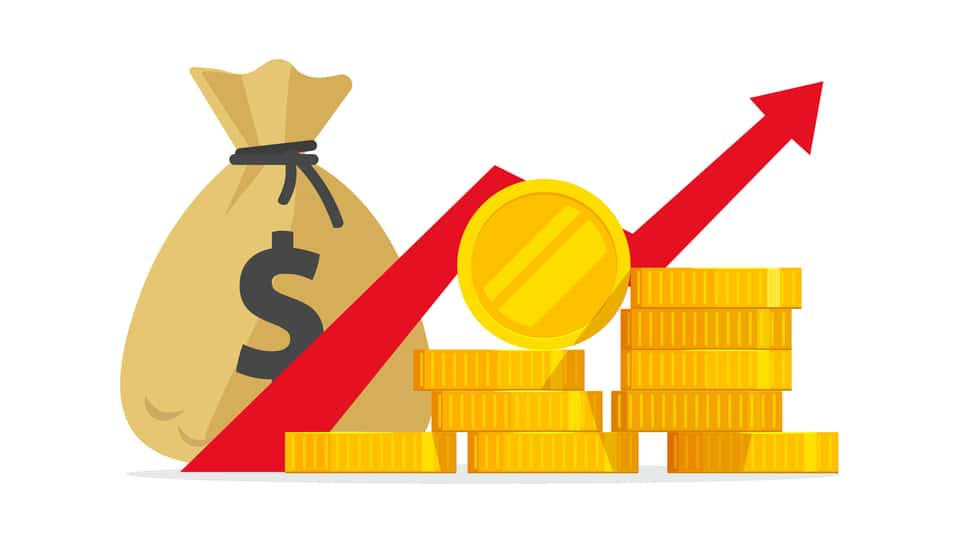The trend of index or “passive” investing accelerated following the financial crisis and seems to now represent a generational shift in the way investors approach the stock market. Namely, they don’t necessarily trust it or those that dispense advice but they acknowledge stocks are still one of the best ways to build wealth.
So, while “passive” is all the rage one astute reader, Pete, noted, “Steve, isn’t the fact that one chooses to invest in stocks, no matter what the vehicle, by definition makes him an active investor… “
This is a great insight and allows us to continue my prior take on passive/aggressive investing. Let’s go the next step and lay out five steps how one can be “actively passive to generate Alpha”
We need to start with the premise that the term “passive” has become too pervasive to cover any index or ETF that has low fees that allows investors to move in and out of them day to day or even minute to minute. This fluidity cuts both ways so let’s see how we can harness the power have a basket of stocks at our disposal.
1.Index Construction
Investors and the media view some popular indexes as gospel in terms of being representatives of the market. But really, all of them are rules-based systems designed by humans (with a variety of motivations) who made decisions in constructing them. How do stocks get added and removed?
Are there caps to one stock’s weight? How often will it rebalance? Reconstitute?
For example, the S&P 500 Index is overseen by a committee of market professionals who basically decide what stocks to include.
They’re literally stock picking, albeit not in the alpha-seeking sense. Or consider the Dow Jones Industrial Average, which only tracks 30 stocks with seemingly random weightings determined by whatever the price per share is of each.
Index construction takes a truly active turn when it comes to smart beta, where people design indexes with all kinds of filters and tilts — typically copied from what worked for active managers in the past in an effort to beat other indexes like the S&P 500. There’s really no daylight between this and what most typically consider “active.”
2.Portfolio Management
When it comes to running an index fund or ETF, it’s easy to imagine there’s no manager, or it’s perhaps some mainframe computer. But quite the contrary: A human portfolio manager is in that role, playing what can be referred to as a game of basis points. On one hand, they play defense by combating front-running; keeping up with dividends, spinoffs, and warrants and trying to avoid capital gains. At the same time, they play offense by trying to eat up some of the expense ratio and inch closer to perfect tracking of the index
You can tell how well passive managers play this game by using an underrated metric called “tracking difference,” which basically measures how far off an index fund or ETF is from its index’s return. This metric is arguably the true cost of the fund, since it is net of fees. For example, an Index Fund, which charges .05%, but only missed its index over the last few years by .01% is rebating investors .04% via the game of basis points.
And in a $500 billion fund, that’s $18 million a year back to investors. There are dozens of similar examples of managers delivering tracking difference that’s tighter than the expense ratio.
3. Usage in Portfolios
All of these so-called passive products are also being used very actively. Let’s start with ETFs, which traded approximately $20 trillion worth of shares last year even though they only have $2.5 trillion in assets. That’s 800% asset turnover, which is about three times more than stocks. Arguably, ETF usage is active investing on steroids.
But what about investors who use ETFs and index funds long-term and don’t trade? They, too, are using them actively via asset allocation. The choice of how much of each asset class to have in a portfolio is actually the most active decision an investor can make, as the vast majority of a portfolio’s returns can be attributed to the asset allocation decisions while stock and bond selection accounts for a small minority.
4. Engagement With Companies
Right now, index funds and ETFs via Vanguard and BlackRock (BX) own 12% of the stock market. (This number is expected to grow quickly, with 75 cents of every new dollar invested in the U.S. going into these two companies’ index-based products.) The role these “passive” issuers play in being shareholders of the companies they own is, again, more active than most think.
Both firms have made it a mission to affect corporate governance at companies they own via passive funds. They have internal teams that do nothing but “engage” with companies on issues to help create long-term value, such as keeping independent boards. While they tend to avoid strategic issues, they have at times voted with activists. They are also part of the Investor Stewardship Group (ISG), which is a collective of institutions representing $17 trillion in assets that seeks to establish a set of basic standards for corporate governance that will go into effect in 2018.
5. Above-Average Returns
Finally, some have a notion that passive investing means average returns. But index funds typically beat two-thirds of discretionary stock-picking managers out there who are burdened by higher fees and transaction costs. In this sense, shedding costs to ensure being above average is a very active decision.
The best course of action is to make the best use of these passive tools without being beholden to them.
SPY shares were trading at $313.72 per share on Tuesday afternoon, down $0.16 (-0.05%). Year-to-date, SPY has gained 27.28%, versus a % rise in the benchmark S&P 500 index during the same period.
About the Author: Option Sensei

Steve has more than 30 years of investment experience with an expertise in options trading. He’s written for TheStreet.com, Minyanville and currently for Option Sensei. Learn more about Steve’s background, along with links to his most recent articles. More...
More Resources for the Stocks in this Article
| Ticker | POWR Rating | Industry Rank | Rank in Industry |
| SPY | Get Rating | Get Rating | Get Rating |






